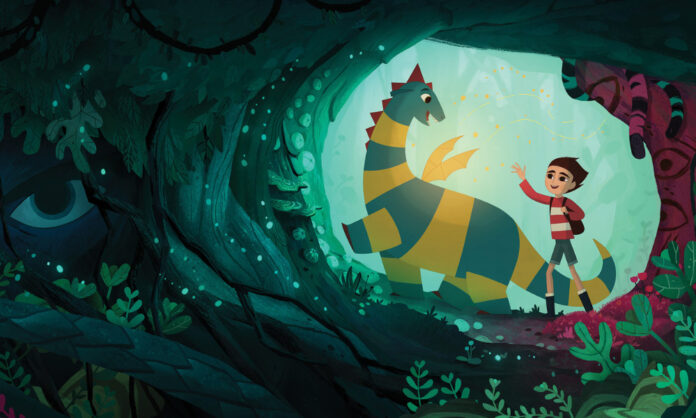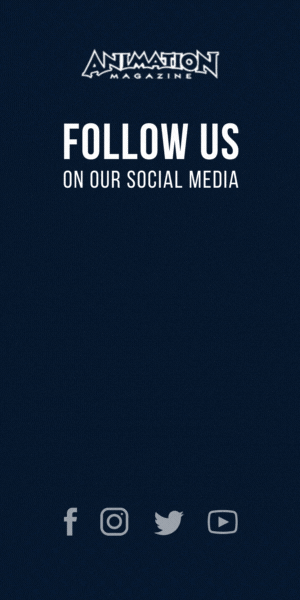***This article originally appeared in the December ’22 issue of Animation Magazine (No. 325)***
Creating a beautifully crafted 2D-animated feature based on Ruth Stiles Gannett’s slim 1948 children’s book My Father’s Dragon is far from a simple task. Fortunately, the team behind this lovely adaptation was none other than the five-time Oscar-nominated Irish studio Cartoon Saloon, led by the universally admired Nora Twomey, who also helmed the Oscar-nominated feature The Breadwinner (2017).
The movie, which is co-produced by Netflix Animation, Cartoon Saloon, Mockingbird Pictures and Parallel Films, follows the adventures of a resourceful young boy named Elmer (Jacob Tremblay) who runs away from home and forms a friendship with an awkward dragon (Gaten Matarazzo) on a magical island. The stellar voice cast also includes Whoopi Goldberg, Ian McShane, Golshifteh Farahani, Dianne Wiest, Rita Moreno, Chris O’Dowd and Alan Cumming.
The process of adapting the story as a feature began over a decade ago when Twomey met with Julie Lynn and Bonnie Curtis of Mockingbird Pictures, producers of movies such as Albert Nobbs and Terminator: Dark Fate. The producers, who were huge fans of Cartoon Saloon’s acclaimed movies, had acquired the rights to the property. “We started looking at creating some concept pieces and thinking about how to open up the story of the book, which is quite a slim volume, and translate it to the screen,” recalls Twomey.
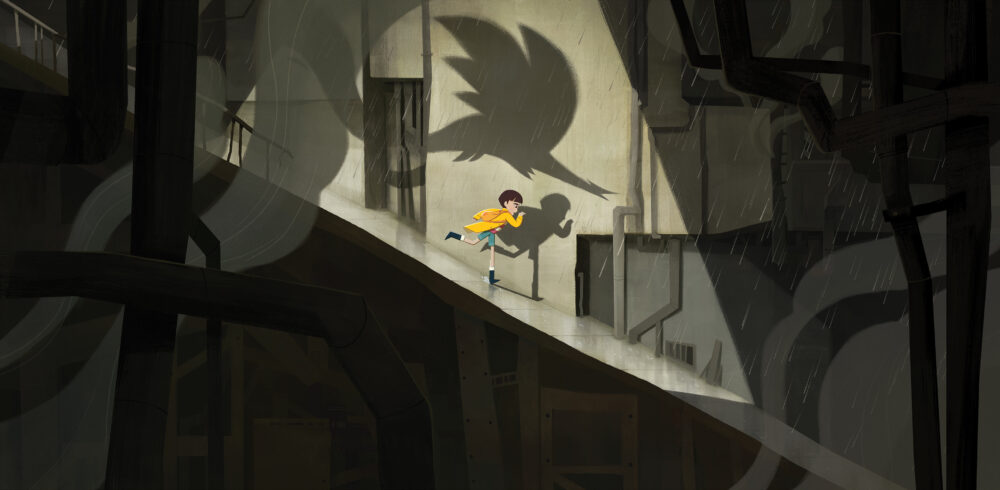
Embarking on a Long Journey
My Father’s Dragon became one of the first animated features picked up by Netflix, but it wasn’t until 2018 when Twomey wrapped up the festival screenings of The Breadwinner that she and the team at the Kilkenny-based studio were able to devote their full attention to the project. The film, which is Cartoon Saloon’s fifth animated feature following The Secret of Kells (2009), Song of the Sea (2014), The Breadwinner (2017) and Wolfwalkers (2020), went through a series of narrative changes during its initial development phase.
“I started working on the animatic four years ago and we went through the first pass in a couple of months,” says Twomey. “At that time, I was still searching for what the film was ultimately about. We thought the film was all about trust — the trust between the boy and his mom that had been broken. But something about that idea didn’t quite seem right to me, instinctually. It took a number of animatic passes to get to the heart of the story. That’s when I realized that the movie is really about two young kids (Elmer and Boris), who are simply scared and are coming at things from two different places. By admitting that they’re both scared, they find strength in each other’s generosity, and that becomes bigger than their fear.”

The director remembers reading the book to her sons, who were quite young when she first started working on the movie. “I felt immediately that Ruth was such a fantastic storyteller,” she notes. “She always keeps the audience on Elmer’s level, and things never get over explained. You also understand how his mom wants to protect him from something huge that is going on in their lives. The story went on to resonate with me more strongly during the making of The Breadwinner, because that’s when I got sick myself and had to protect my kids from the bigger picture, but not lie to them at the same time.”
Twomey traveled to the town of Trumansberg in upstate New York to meet with Gannett in person. “She is 99 years old and lives in a beautiful house surrounded by her loved ones. She had seven daughters and a lovely life there,” she says. “She has been a big part of her children’s lives and has had an active role in the local school community and helped kids with the literacy program. She was incredibly inspiring, and I wanted to take some of that flame and include as much of it as I could in the film.”
The director mentions that working with Netflix allowed the creative team to develop and polish the central themes of the movie. “We always went back to the beginning,” she says. “When you have problems in the third act, it’s always essential to revisit the setup. For me, it was very instinctual. For example, there are scenes in the movie where Boris reveals this deep shame about not being enough of a dragon. And later on, Elmer knows that he could lose his friend, but he has to empower him. He has to be utterly selfless.”
Giovanna Ferrari, who was both the head of story and animation director on the movie, points out that this project allowed her to work with many female creatives. “We all felt free to express ideas, spitball and brainstorm,” she says. “You felt this freedom to go as far as you wanted with your crazy ideas, and then maybe bring them back down to something more grounded. I felt that we could play with the story and characters until everything really clicks. I know that there are some story rooms where you feel judged and maybe not really free. But Nora has this talent in creating a very safe space for herself and her team to play and have fun. That brings out the best in everyone.”
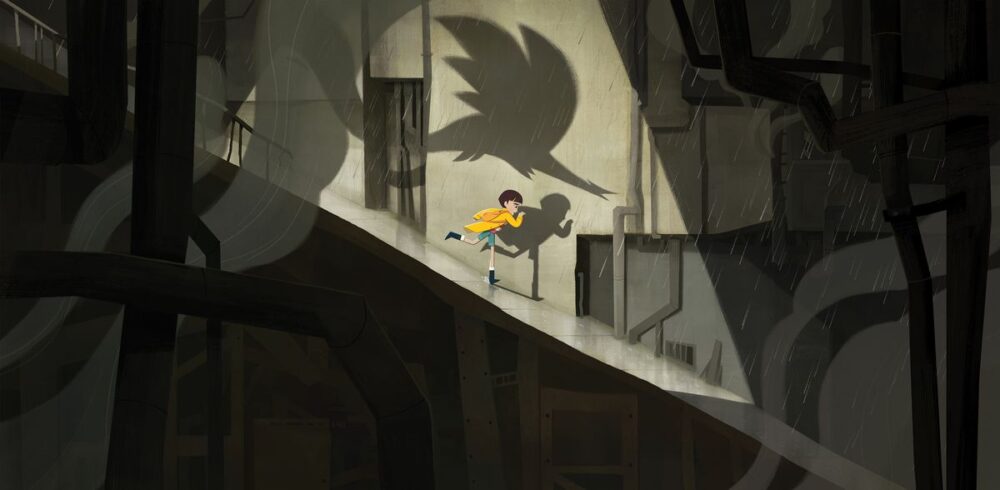
Assistant director Louise Bagnall, who received an Oscar nomination for her 2017 short Late Afternoon, points out that the ambition and scope of My Father’s Dragon were quite different from previous Cartoon Saloon movies. “We have all the different characters and the many locations, so the scale and range of the film is quite larger than the previous projects. However, the friendship at the heart of this story feels pretty real — even though it’s between a giant, striped dragon and a young boy. When you look back at films like Song of the Sea or The Breadwinner as well, you see that the main characters are using elements of storytelling to understand how to cope. It was important for us to find a way to tell a story that can give kids feelings of empowerment and connection.”

My Father’s Dragon follows a very distinctive aesthetic style, which is reflected both in its meticulous art direction and stylized character and background designs. Yet, because the movie was inspired by an existing picture book, the creative team strove to use the original book illustrations by Ruth Chrisman Gannett (the author’s stepmother) as their anchor.
The film’s art director, Áine McGuinness, who has worked on movies such as The Breadwinner and TV shows such as Dorg Van Dango and The Amazing World of Gumball, recalls that one of their earliest discussions with Twomey was about how important spaces are in this movie. “One of the main tools that we use to compose our images is the strength of the values,” they note. “We try to get across that the film could actually exist in black and white, so that the values are more important than even the color itself. I felt that everything needed to be softer and quieter so that viewers could simply look at a character’s eyes and feel their expressions.”
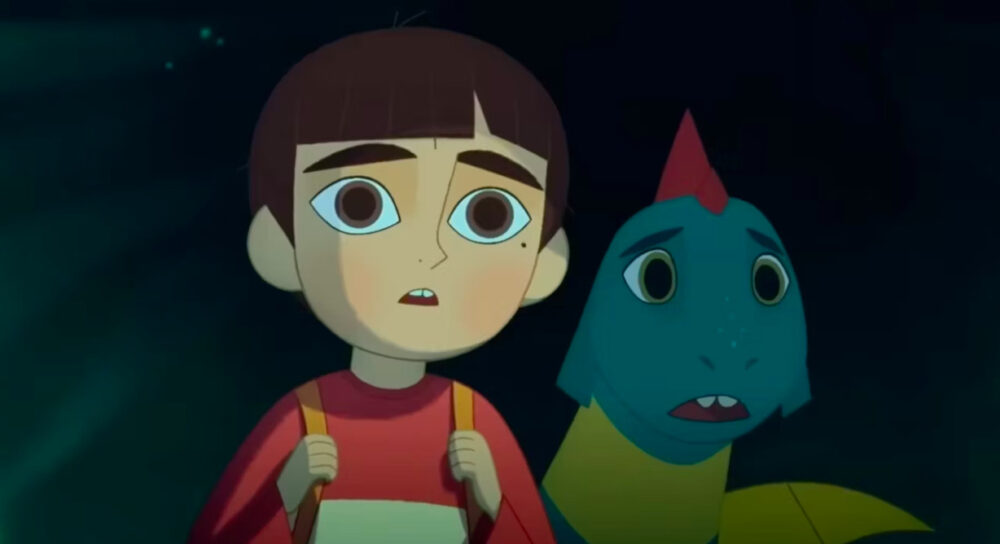
Another trademark of Cartoon Saloon’s movies is the way light and shadow are used to convey moods or spotlight characters and backgrounds. “One of the many sources of inspiration was classic black-and-white film noir and the way you can also see a spotlight shining on a character,” says McGuinness. “Our main designer Rosa Ballester also used a very illustrative, stripped-back and subtle shape language using simple shapes and low level of detail. The characters have simplified designs as well, so that the animators could just focus on the acting.”
The art direction includes specific color schemes for each section of the movie. “The early sequence is covered with gold, and you see the golden motif repeated through the journey as it symbolizes safety and home,” notes McGuinness. “We repeat this color in different points, when Elmer dreams of opening a new store in the city. Then, when we meet the dragon and he is flying, we bring back that color. Also, we see the same color during the emotional scene in which Elmer figures everything out. There’s even gold shooting out of the summit. So, the gold just becomes like a point of safety for him, and we bring it back when he returns to the city and it’s actually sunset. He has been off having this adventure in his imagination, but his perspective has changed, and he sees the city in this new light.”
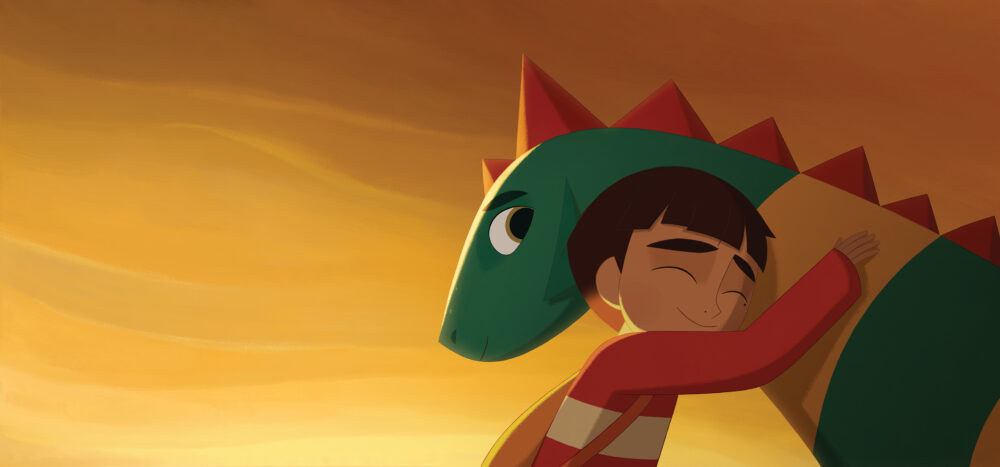
Holding Up a Mirror
When asked about the film’s key challenges, Twomey says, “We had a huge logistical challenge when the island starts to sink while Elmer and Boris are trying to cross the river. From a production perspective, there were so many balls in the air with the location planning, the banks of the river sinking, the shot choices, the characters’ performance and the hand-drawn water effects. I was worried we wouldn’t pull it off. But we had such an amazing team planning every detail, breaking down each particular problem and communicating between departments, even during lockdown. They managed it so well I just take it all for granted when I look at it now.”
She adds, “We also had dramatically challenging sequences. Our film is for family audiences, but Cartoon Saloon never shies away from emotional intensity and the complexity of real friendships. There are a couple of times in the film where we really put the audience inside Elmer’s experience, and sometimes the crew — the animators and the sound people in particular — were swept away with their work.”
Twomey says she’s thrilled with what each and every member of her team were able to do during a very challenging period for everyone. “I am really proud that the whole team, from Julie Lynn, the producer that first reached out to author Ruth Stiles Gannett and me, to the DI artist and sound mixers and everyone in between, poured their whole hearts into this film. None of our cast or crew held back, and I think audiences will feel that passion for the craft of animated film on the screen.”
The director hopes audiences will see a little bit of themselves reflected in her movie. “I mean all we can do is scratch the surface of ourselves and try to bring some reality there. Of course, I hope viewers are taken away on a colorful adventure. But, at the end of the day, I hope they feel the truth of the characters.”
My Father’s Dragon premieres on Netflix on November 11.






